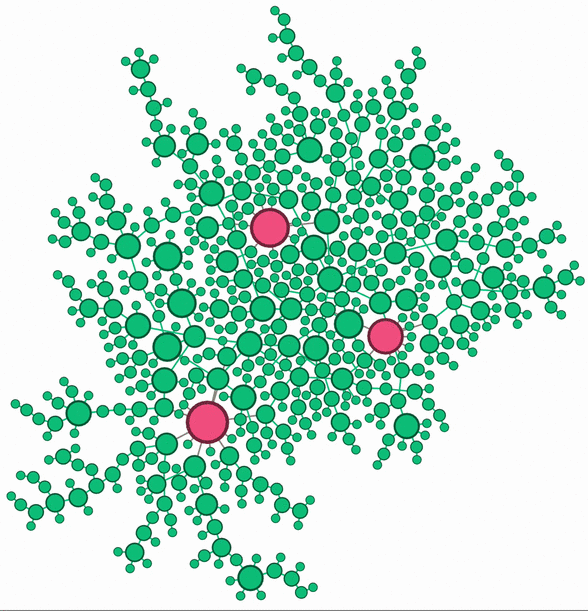Zhuolin Qu
Network-based model for Sexually Transmitted Diseases
Chlamydia is the most commonly reported sexually
transmitted disease in the United States. Untreated
asymptomatic infections may cause permanent damage to the
women’s reproductive system. Routine screening is
recommended for women with risk factors to identify these
"silent" infections.
In close collaboration with the Tulane School of Public
Health team, we develop and analyze a stochastic and
individual-based model to simulate the chlamydia epidemic on
dynamic sexual networks, and we evaluate the efficacy of
screening high-risk men to control chlamydia prevalence in
women. Read more about the "Check
It" Program.
The proposed model presents a robust framework for modeling other sexually transmitted diseases spreading in a population with assortative mixing.


Left: Chlamydia epidemic spread over a static sexual network. Larger nodes (person) have more neighbors (sexual partners). The infection status of each person is tracked using the Susceptible (Green) - Infectious (Red) - Susceptible (SIS) framework. Right: Model prediction for the impact of male screening on the prevalence in women under different intervention coverage. Darker region gives a higher Chlamydia prevalence in women.
Collaborators
James
Mac Hyman (Tulane University)
Patricia
Kissinger (Epidemiology, Tulane)
Asma
Azizi (Kennesaw State University)
Charles
Stoecker (Global Health Management and Policy, Tulane)
Related Publications
-
Charles Stoecker, Alisha Monette, Zhuolin Qu, Norine Schmidt, Megan Clare Craig-Kuh, and Patricia Kissinger,
Cost Effectiveness of Check It: A Novel Community-based Chlamydia Screening and Expedited Treatment Program for Young Black Men, Clinical Infectious Diseases, (2021), ciab818. -
Asma Azizi, Jeremy Dewar, Zhuolin Qu, and James M. Hyman.
Using an Agent-based Sexual-network Model to Guide Mitigation Efforts for Controlling Chlamydia,
Epidemics, 35 (2021), 100456. -
Zhuolin Qu, Asma Azizi, Norine Schmidt, Megan Craig-Kuhn, Charles Stoecker, James Hyman, and Patricia Kissinger.
Effect of Screening Young Men for Chlamydia trachomatis on the Rates among Women: A Network Modelling Study for High-prevalence Communities,
BMJ Open, 11 (2021), e040789. -
Asma Azizi, Zhuolin Qu, Bryan Lewis, and James M. Hyman,
Generating a Heterosexual Bipartite Network Embedded in Social Network,
Applied Network Science. 6 (2021), 30